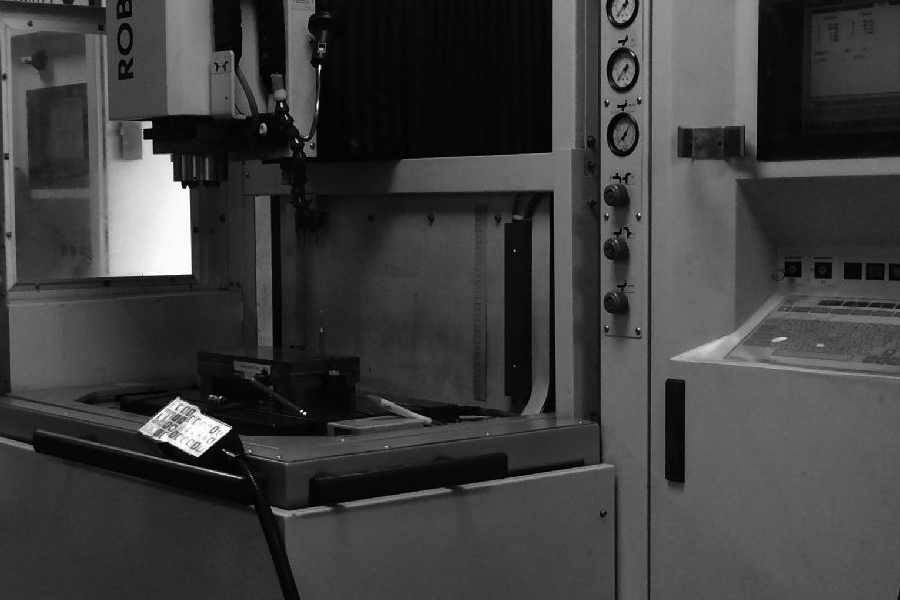CNC Machining Center: Method for Diagnosing and Maintaining Failures of Non-action Faults when Changing the Tools of the CNC Lathe
①The machine tool of CNC lathe is stuck
If the tool holder is stuck mechanically, the tool holder motor will be blocked and an overload alarm will appear. When removing the mechanical jamming failure, you can disengage the knife holder from the motor and use a wrench to turn the worm. If it cannot rotate normally, it means that the machine is stuck. At this time, the knife holder can be disassembled in the correct disassembly order to further check whether the bottom bracket, various pins, couplings, etc. are deformed. Because the tool holder mechanical jam is often caused by collision deformation.
②The power supply of the CNC lathe tool holder motor is out of phase or the phase sequence is wrong
The phase sequence error of the power supply of the knife holder motor generally occurs after the machine tool is overhauled or a new tool holder is replaced. At this time, the power supply should be cut off and the phase sequence of the motor adjusted. The motor does not rotate and there is no sound: the power supply or the winding has two or more phases of open circuit. First check whether the power supply has voltage. If the three-phase voltage is balanced, then the fault is in the motor itself. The resistance of the three-phase winding of the motor can be detected to find a break Winding of wire. The motor does not rotate but emits a dull buzzing sound: One phase of the power supply or winding is open. The cause of the phase loss may be the poor contact (burn or loose) of the switches and contactors in the motor power supply circuit. Repair and adjust the movement , Static contact, make it contact well; a phase of the line is missing, and the disconnection is detected, and the connection is firm; the virtual welding between the motor winding wires leads to poor contact, and carefully check the motor winding connection wire and weld it firmly; power supply If the phase is missing, troubleshoot the external power supply.
③When there is no power connection for the CNC lathe tool post motor, change the tool in the MDI mode and detect that there is no voltage on the power input end of the motor. Observe whether the intermediate relay KA4 and the contactor KM1 in the electric cabinet are operating. Check whether the PLC output signal Y0.3 is disconnected; if the KA4 coil is energized, observe whether KM1 is engaged. The KM1 may be closed or the normally-open contact is damaged or the three-phase electrical wire to the motor is disconnected. If KM1 is not activated , It is possible that the relay KA4 is bad, the contact of the KA4 contact is bad, and the power supply on the contact is disconnected.
④ The CNC lathe tool holder motor is damaged
If the motor still does not rotate when the power supply is connected to the normal load, the motor is damaged. Motor damage is generally caused by phase failure, overload operation, winding grounding, winding phase-to-phase, and inter-turn short-circuit faults. Ground fault detection method: use the shake meter to detect the insulation resistance of the motor winding to the ground. When the insulation resistance is less than 0.2 megohm, it means that the motor is seriously damp. Check step by step with multimeter resistance file or check light. If the resistance is low or the check light is dark, it means that the winding is seriously damp and needs to be dried. If the resistance is zero or the check light is close to normal brightness, then this item is close to Ground. The grounding of the winding generally occurs at the outlet of the motor. The inlet of the power cord or the slot where the winding protrudes. For the latter case, if the grounding is not serious, bamboo or insulating paper can be inserted between the stator core and the winding. If it is not grounded after inspection, it can be wrapped and coated with insulating paint to continue to use. Winding short-circuit fault detection method: use a megohm meter or multimeter to check the insulation resistance between any two phases. If it is found below 0.2 megohm or zero, it means that there is a short circuit between phases (all connections of the motor leads should be disconnected during inspection) Measure the current of the three-phase windings separately, the one with a large current is the short-circuit phase; use a short-circuit detector to check the short-circuit between the windings; use a bridge to measure the resistance of the three-phase winding, and the small resistance is the short-circuit phase.
